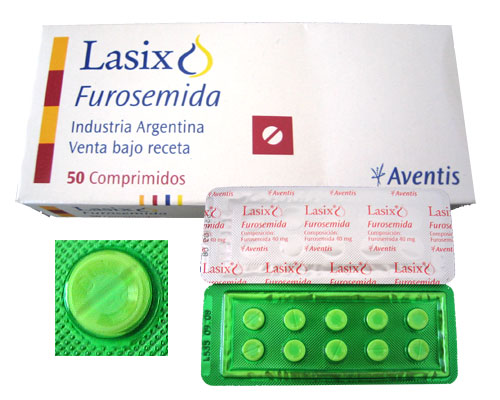description
CONTENT: Lasix, 40mg (15 pills)
The active ingredient - furosemide - has a diuretic effect by blocking the reverse absorption of sodium and chlorine ions in the ascending part of Henle's loop. Lasix also acts on tortuous tubules to an insignificant degree; this mechanism is not associated with antialdosterone activity or carbonic anhydrase inhibition. Lasix promotes the excretion of potassium, magnesium, calcium.
With intravenous injection, Lasix can rapidly reduce arterial pressure, pulmonary artery pressure, bias and pressure in the left ventricle. Diuretic effect is observed after 5 minutes, with a maximum being reached within half an hour, the duration of the diuretic is about 2 hours.
When administered, the diuretic effect of Lasix begins within the first hour and reaches a maximum after 1.5-2 hours, the duration of the effective period is about 7 hours.
Lasix is metabolized and excreted in the body, mainly in the urine, in the form of a compound with glucuronic acid.
type of application
The method of application and the dosage regimen should be set individually, depending on the degree of disturbance of the water-electrolyte balance, the extent of glomerular filtration. In the future, dose adjustment is necessary, depending on the degree of severity of the patient's condition, the size of the diuresis. Usually the drug is given in the form of tablets, but if this is impossible or there is an urgent condition, the drug is injected intravenously, the time of Lasix administration should not be less than 1.5-2 minutes.
With an average degree of edematous syndrome, the starting dose of Lasix is 20-80 mg orally or 20-40 mg intramuscularly or intravenously, with insufficient effect, the dose can be increased by 40 mg in the case of oral ingestion and by 20 mg when injecting Lazix becomes. The dose increase is possible no earlier than 6-8 hours after the first oral dose and no earlier than 2 hours after parenteral administration. Correction of the dose is made before the occurrence of adequate diuresis. The so-called single dose can be given once or twice a day. The maximum effect of Lasix is observed when the drug is prescribed 2-4 times a week.
Side effects
When using Lasix in large doses, there is a decrease in BCC (the volume of circulating blood), which leads to thickening of the blood and possible thrombosis. A common side effect is the development of water-electrolyte imbalances: alkalosis (including increased metabolic alkalosis in diabetes mellitus), sodium, chlorine, calcium and potassium deficiencies; Violation of biochemical properties of the blood: increased creatinine, cholesterol, triglyceride, uric acid (with exacerbation of gout), glucose (especially with diabetes mellitus).
Allergic reactions are possible, from skin manifestations (purpura, dermatitis, pruritus, erythema) to anaphylactic shock.
Rarely there are injuries from the blood: leukopenia, eosinophilia, hemolytic changes, agranulocytosis, thrombocytopenia.
In low-dose or premature babies, using Lasix in the first few weeks of life can lead to an uncontrolled Botallov channel.





